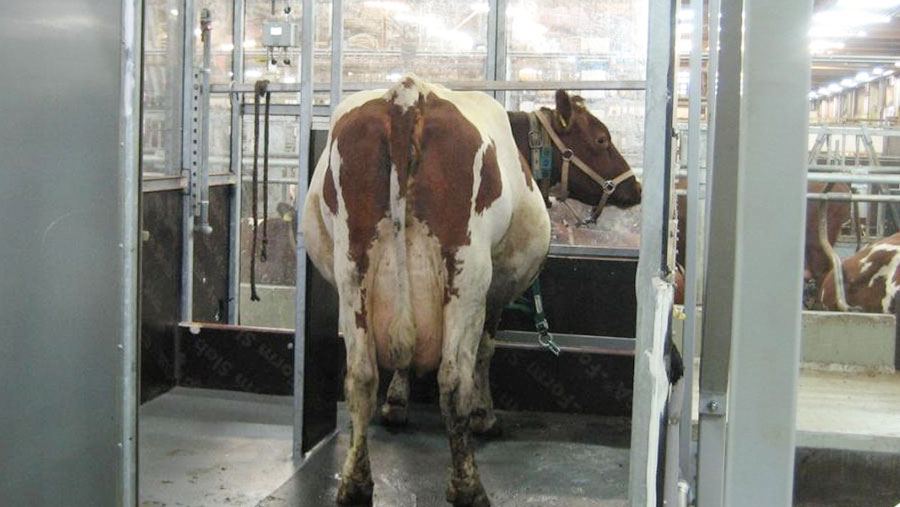Scientists study cows in glass tanks to cut methane output

A cow’s location, genetic make-up, feed and productivity could be having a telling effect how “climate-friendly” it is, say European researchers.
These are four key avenues of inquiry for staff on the RuminOmics project, an EU-funded study led by the University of Aberdeen, which has analysed cows in glass tanks.
Research includes “the thousand cow study” of animals across Europe, including 100 Ayrshire cattle contained in 20cu m glass boxes on a farm near Minkiö, Finland.
See also: Farm antibiotics may increase global warming
Cows were monitored for methane emissions, digestion, production characteristics, energy efficiency, metabolism and microbial make-up.
Four factors can affect the amount of methane a cow produces:
- Breeding: A cow’s genotype affects a its microbial population at ruminal and intestinal level. However, it is not known if selecting for more climate-friendly cows adversely affects milk production and performance.
- Healthier milk: About 70% of fat in milk is solid fat, as rumen microbes convert unsaturated fatty acids into saturated fatty acids. Changing feed could both reduce the proportion of methanogens (methane-causing microbes) and make milk healthier as the microbes relate to both methane and milk fat.
- Silage dominant: Scandinavian experts expect Swedish and Finnish cows to produce high levels of methane, due to a high-silage diet.
- Methane production per kg of milk or beef reduces in line with production level and cow age. This means high-producing cows should be favoured and kept in production “as long as possible”.
RuminOmics seeks to reduce methane and carbon emissions in livestock agriculture by adjusting farming systems.
Speaking at the RuminOmics conference in Edinburgh in November 2015, independent consultant Professor Cledwyn Thomas said methane mitigation could come primarily from breeding and secondly from nutrition.
He stressed that selecting for efficient animals appeared to be the best policy as there was no evidence that low emitters were more profitable or efficient.
